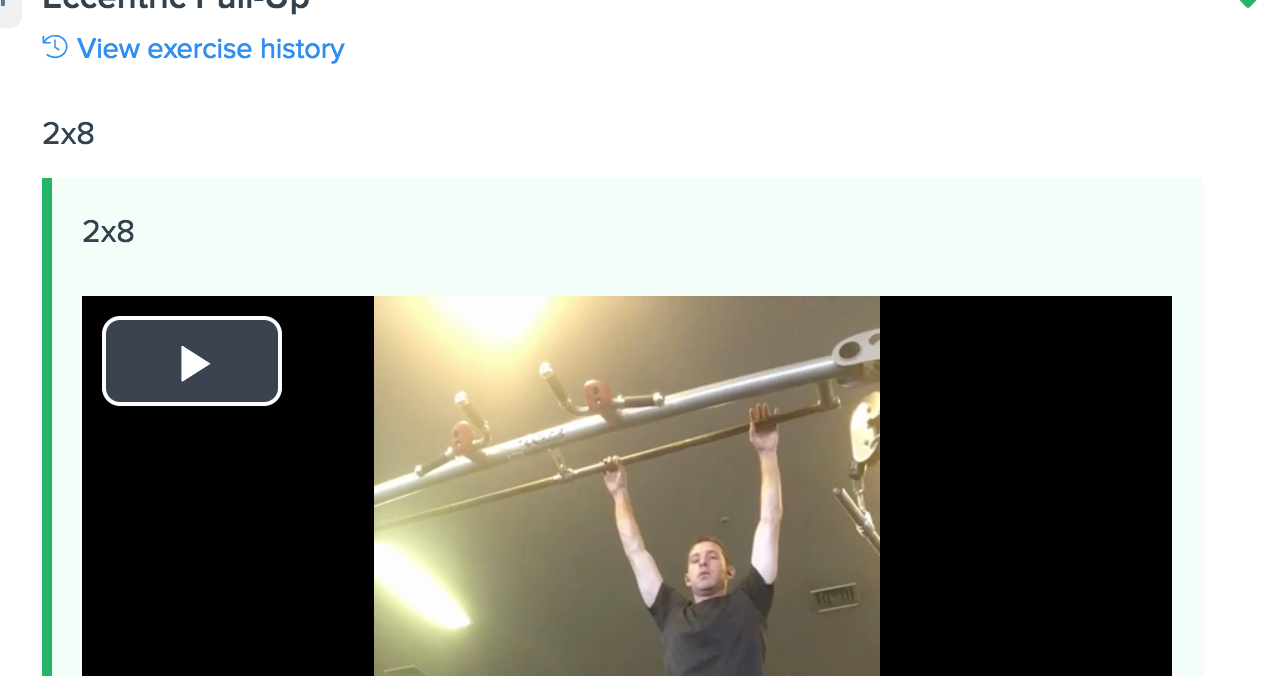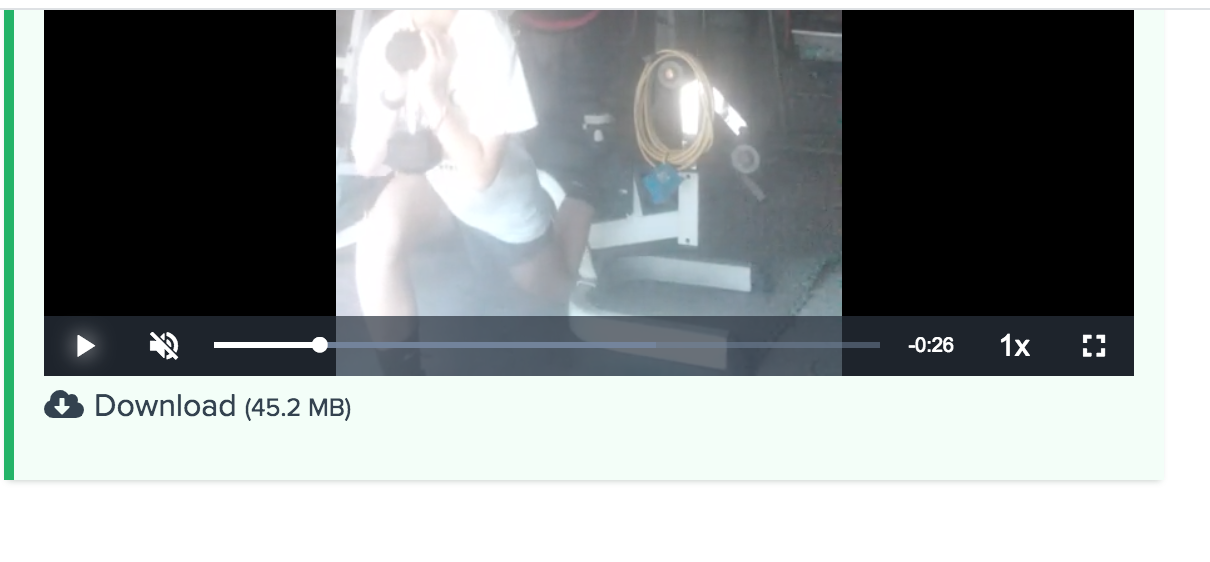
29 Jun Confessions Of A Strength Coach Who Dabbles In Online Training

While online training will vary with each coach, I’m happy to share my imperfect, chaotic journey.
To put things into perspective, I started coaching in person back in 2012, and didn’t go online until beginning of 2018.
That’s a wait of six years.
So what does this mean?
I’m good at math.
But also, I waited until I honed my craft as a trainer, you know, with actual human beings, until I started working with people I may never see in real life.
And that’s the reality of online training: at best, you’re seeing someone through a Zoom video call, as they demonstrate their Split Squats to you in their living room with their cat lying on the sofa next to them.
What’s more is, as they demonstrate, you see a whacky, lateral shift in their hips. Hopefully you discern that it’s the imbalance in their left gluteus medius.
With that said, you’re walking through thick, murky waters if you don’t know how to:
1) regress or progress their Split Squat
2) coach them through the movement given their mechanics and
3) ask them about their cat
Oh! So that brings me to what you need to do beyond coaching. Being a coach and friend to your online clients is critical. Do both.
You see, people aren’t paying for the program necessarily (unless that is ALL they want).
Admittedly, my programs are simple, and they’re not anything that will make it to reality television, or win a Noble Prize.
Honestly, effective and simple programming is expected. You have to do more than what is expected.
Do you get to know your clients?
Do you check in with them weekly?
Do you do video calls monthly?
Do you send them gifts?
Do you give them nutritional tips?
Do you send them Ronaldo training videos to motivate them?
Do you exchange cat pictures via What’s App messenger?

Oddly enough, several of my online clients are cat people. If this doesn’t shout, “the Law of Attraction is real!” I don’t know what does.
Anyway…
It’s worth mentioning that it never was a goal of mine to go online. Even when I started this blog, I wrote articles because I loved writing. And selfishly, I have written for my own personal expression and creativity for all of these years.

If I was in this for all of the followers, the likes, the money, the product sales, the online coaching, I would’ve given up blogging years ago when I had only one follower, my mom. ;-O
There’s nothing worse than the trainer who exclaims, “I want to start a blog!” with the intention of selling programs after publishing one, meager article.
There’s nothing worse than the trainer who wants to sell programs on the internet after training all but one client.
There’s nothing worse than the trainer who says, “I need to make money fast!” and goes into online coaching with unauthentic energy and desperation.
So why did I go online? To permeate my message and impact to others. If I can help a female athlete across the pond with my programming to reduce her chance of knee injury, that’s where the magic happens.
Or, if I can inspire a young kid to do pull ups on their tree in the back yard, how freaking cool is that?
Okay, time out for a second. Let’s get back on the topic of money before I get all heart-felt with this whole create impact-thing-a-ma-jig.
You know what I love? When trainers believe they can make “passive income” from online coaching. Here’s a newsflash for you: ain’t nothing ‘passive’ about it.
It’s not like the moment you set up your software, blast out a program, and get your first client payment on Stripe it’s chilling on the beach for you.

HAHAHAHA. Aren’t you cute as a button!
Buckle up to do just as much work, if not more, as in person coaching. If you truly want to help and impact people like you say you do, it would be a major disservice to your online clients if you tossed them a cookie cutter program, only to disappear to your exotic vacation and new, grandiose lifestyle.
Personally, I’ve done some of my most work while on vacation. Again, I work 365 days a year.
I’ve recorded coaching videos in hotel rooms.
I’ve written programs while using Southwest Airline’s dodgy WiFi.
I’ve taken phone calls at 12,000 feet during a blizzard.
I’ve said no to beach time because I had program deadlines.
I’ve been stuck in the hotel room aggressively tapping away at my keyboard to get people started on their workout cycles on time.
Just when you thought things were getting crazy, let’s get crazier:
Even when not on vacation, I’m waking up at 6:00am on a Saturday morning to film new videos for my online library.
Or I’m updating five different client programs on a Sunday afternoon.
Or I’m recording a coaching video during my five minute break at my facility.
Then, sending it to my online athlete when I get home at 8:00pm at night.
So this bears repeating, if you want to coach online, you have to swallow the stale pale that this is not always rainbows and beaches.
After all, this is coaching. Be a coach and put in the work like you would with someone in person. Being meticulous with your online peeps does them a major service, and it allows you to truly help someone become stronger, badass, and confident.
A Few More Things…
I’m on a roll, so let me keep spewing.
Taking the conversation back to teaching videos, it’s imperative online clients submit their videos. And if they don’t, they need to understand you can’t help them to the best of your coaching ability.
Mind you, some clients are totally okay with you just giving them a program, peace-ing out and never talking to them again. I’ve had this happen a few times and both parties are okay with it. Totally fine, as long as everyone is clear and on the same page.
But if people want to get critiqued on their exercise form, stay safeguarded from injury, execute safe form, and progress as much as possible, video submissions are a must.
How will I know if you are controlling your Eccentric Pull-Ups?

Or how will I know if you’re getting proper ankle dorsiflexion and keeping your knee safe on a Bulgarian Split Squat?
 Replying to video submissions and comments on the training software are other monsters to tackle.
Replying to video submissions and comments on the training software are other monsters to tackle.
Full transparency: if you don’t respond to someone within 2.5 seconds, your online client will be okay. It’s good to set boundaries with people, as well as be transparent about expectations.
Remember, you have a life, too. Family. Friends. Hobbies. Rest days. And on top of that, if you are a talented in person coach who works 8-10 hours a day in a performance facility with clanking barbells and no air conditioning, yeah, get to bed.
Honestly, if I were an online client, I’d be concerned if my online coach wasn’t busy with their in person coaching, and I’d be weirded out if they were constantly getting back to me like a desperate, little puppy.
That would just scream, ‘does this chick even practice their craft?!’ to me.

One more thing: if clients expect you to hold their hand 24/7, then they may not be the ideal client. Honestly, some degree of intrinsic motivation is required.
Initially, some may need an extra push or more check-ins, but eventually, they need to hold themselves accountable. This reminds me of what strength coach Tony Gentilcore always says, “it’s a coach’s job to eventually ensure clients don’t need you.”
As an example, many clients of mine have flourished under my programs for years, and eventually, graduate to no longer needing me. So they deactivate as clients, stop paying me, go out into the wild, and work out on their own with tenacity.
For me, this is the most rewarding thing to see – to have taught a client the basics of strength training, programming, and progressive overload so well that they can do it on their own with confidence.
Okay, One More Thing, I Promise…
The whole paradox of all of this is trainers get into the fitness industry to work with people, yet everyone is so quick to go online.
Don’t we become trainers to help human beings?
To connect and to coach?

Yes, you can connect and coach online, but before you do so, make sure you’ve mastered the art of actual coaching in a high performance gym setting.
And more importantly, make sure you keep your skills fresh by continuing your in person craft, even when you do go online.
It has to be the perfect balance of sharpening your teaching axe with real humans, as well as creating impact worldwide with glowing screen humans.


No Comments